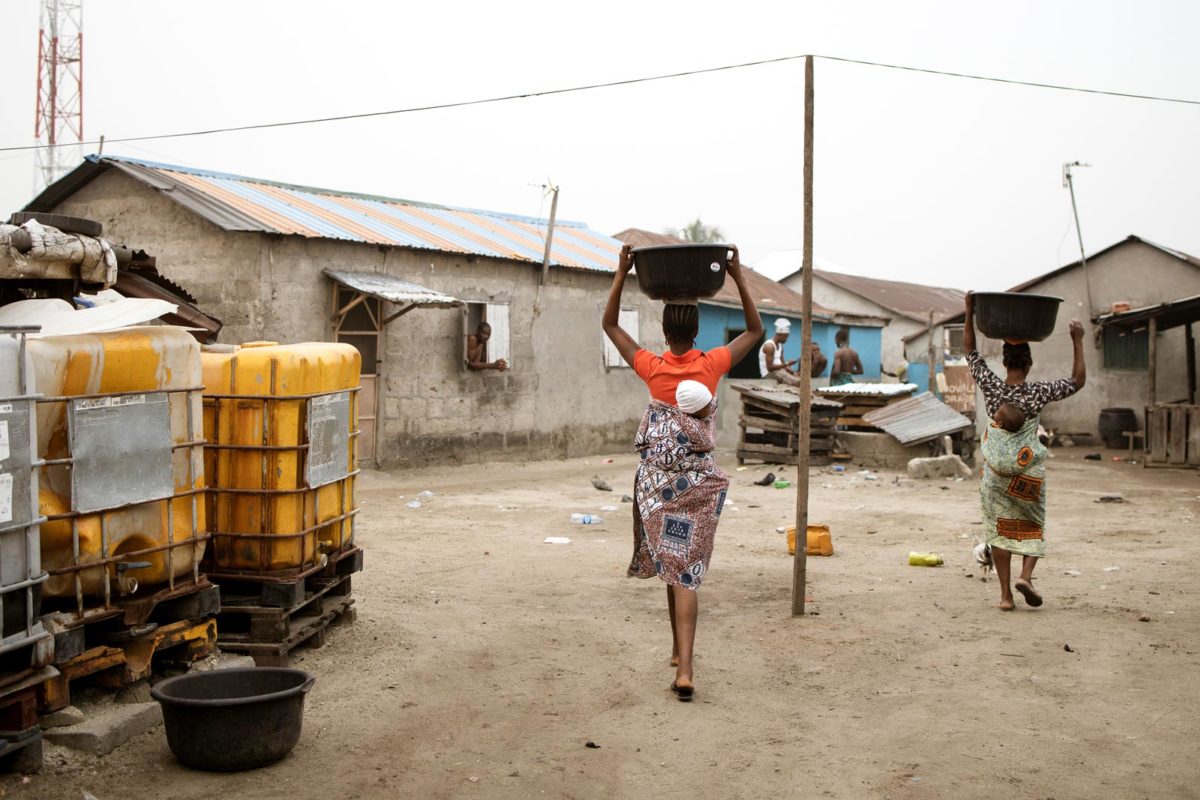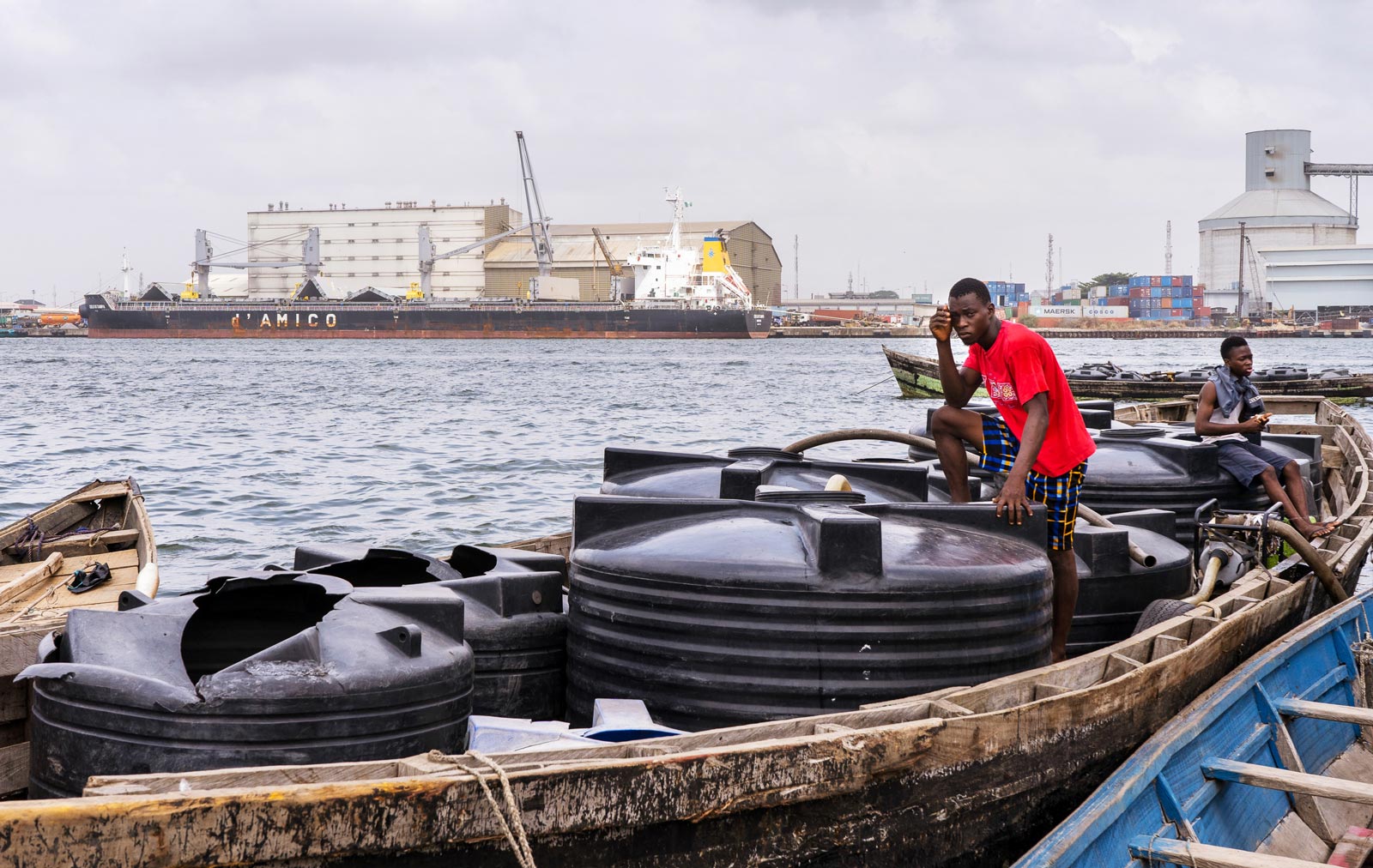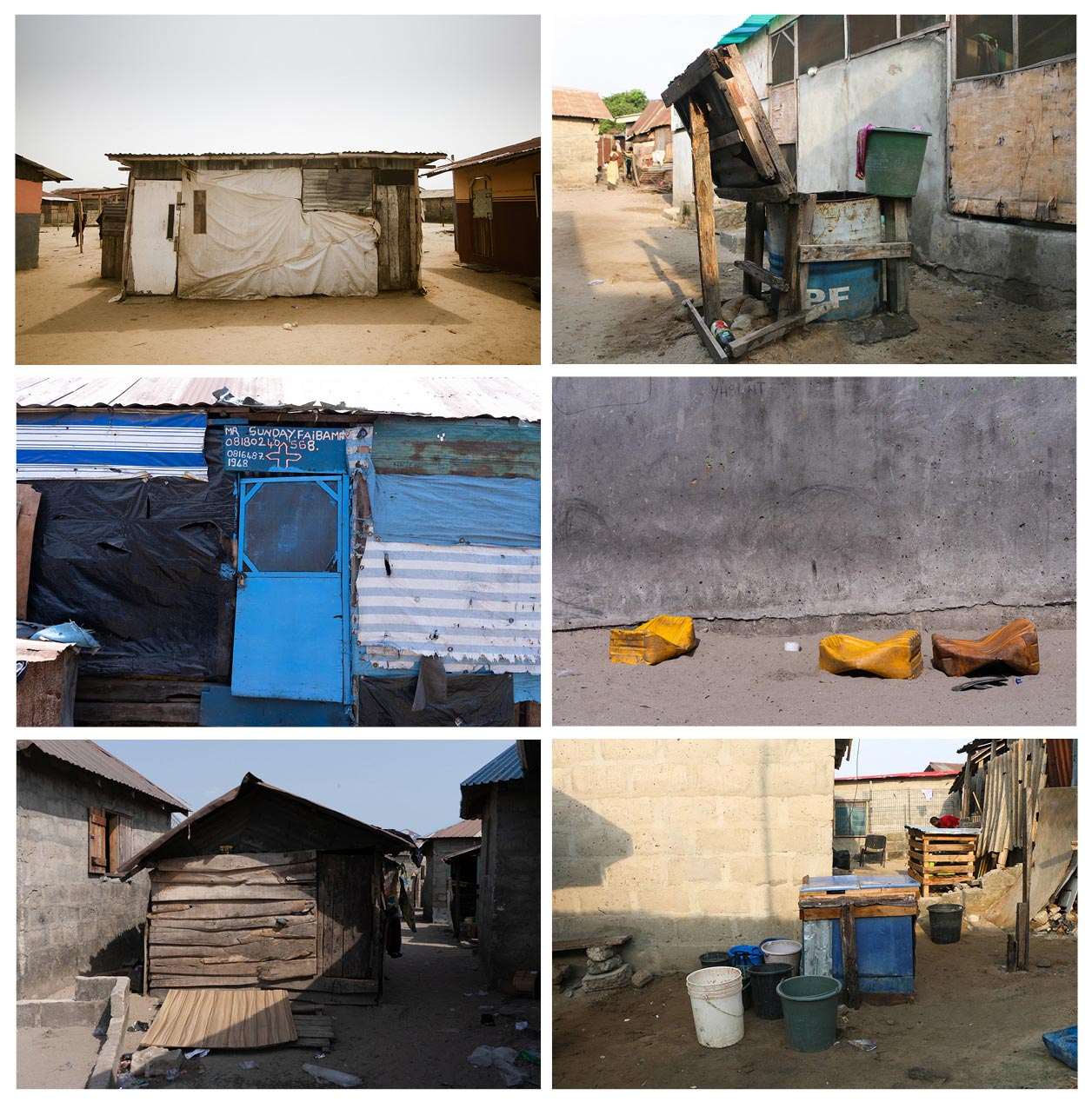By Kyra Steck
Photos by Nengi Nelson
In January of 2021, Nengi Nelson traveled to Sagbo Kodji, a small coastal community on Lagos island in Nigeria. Accompanied by her Canon 70D, Sony A7iii and a24-70mm lens, she cautiously entered the town – a walkable community with a collection of wooden and cement houses, shops, charging containers and wells. While Nelson was on an assignment in collaboration with the CCIJ to document the community’s difficulty obtaining clean drinking water, she knew it would be weeks before she would capture her first image.
An experienced Nigerian photojournalist, Nelson understands the suspicion toward journalists that pervades in her home country – and how to navigate it. Over the course of her five-year career, she has developed strategies to approach and work alongside apprehensive communities whose stories still need to be told.
Nengi Nelson
Nengi Nelson was born and raised in Rivers State, Nigeria. She first became interested in photography in 2016 and started her career as a commercial photographer shooting events and portraits.
Soon after, however, Nelson decided she wanted her work to have a greater impact. She also felt the need to connect more with her images, her surroundings and those she was photographing. She transitioned to photojournalism, starting with a trip to 11 Nigerian cities with a writer, photographer, filmmaker and producer to document the Nigerian story.
“What was really important was telling Nigerian stories from a Nigerian perspective through Nigerians,” said Nelson.
A powerful learning experience, the trip was also the first time she experienced the suspicion toward journalists many encounter on the job.
Roots of Suspicion
The roots of this suspicion are often diverse and complex.
One contributing factor is the decades-long tradition of “poverty porn journalism” on the continent, Nelson said. This type of reporting, which reduces the experiences of entire communities to a narrative of suffering, would often leave community members feeling invaded, looked down on, and disrespected, said Nelson.
Many wish to protect themselves from that portrayal.
“I think the way we portrayed Africa in the past has been so negative, has been so dehumanizing, has been so much about objectifying people rather than actually rendering their humanity, that I truly believe there is a very big trauma attached to it,” said Bénédicte Kurzen, a French photojournalist who has lived and worked in Nigeria for nearly a decade.
Journalists’ monetary gain through their coverage is another factor, said Kurzen.
Community members may feel exploited, she explains, knowing others are profiting off their image when they receive no benefit themselves. Kurzen said she sympathizes with this concern, noting it is particularly difficult when those being photographed are in distress. These feelings of exploitation can also play into a larger context of governmental abuse, she added, as the state often fails to provide its citizens with adequate healthcare, education and infrastructure, and often engages in corruption.
An easier factor to address is a common, but deep, misunderstanding of what journalists do and what their mission is. Rather than immediately snapping photos upon arrival, both Nelson and Kurzen dedicate substantial time explaining who they are, what they do and what their goals are.
Sagbo Kodji
During her initial research, Nelson saw a BBC story on a fire that occured on Sagbo Kodji. According to one source in the community, the town didn’t have enough access to water to effectively stop the flames.
This detail sparked Nelson’s interest.
“We were very interested in understanding this community and the irony that they were surrounded by water, yet didn’t have potable drinking water,” she said.
Sagbo Kodji is home to 30,000 residents, many of whom struggle to access clean water free of high mineral concentrations or contamination. Without pipe-borne water or boreholes, the people of Sagbo Kodji are often forced to choose between water provided by local vendors or nearby wells.
Local vendors, or “waterpreneurs,” use their boats to taxi tap water from private boreholes on the mainland to Sagbo Kodji. Their business is often exploitative, as they charge community members an inflated price for clean water – 60 NGN (16 US cents) per 25 litres, double the price the waterpreneurs originally charged. Some waterpreneurs defend their prices, noting that their long trip across the Lagos lagoon can cost over 50,000 NGN ($131) in fuel alone. Others, however, admit they only spend $13,000 NGN ($34) on the trip.
Salty ocean water can also seep into the tanks, making the water undrinkable.
Wells, however, are not an effective alternative. They are often dirty, exposing the residents of Sogbo Kodji to water-borne illnesses such as typhoid, cholera and diarrhoea.
Leaning on her previous reporting experiences in Nigeria, Nelson was very intentional in how she interacted with the community, focusing on truth, respect and empathy.
Nelson said she had to ensure she went through the correct channels. In Sagbo Kodji, that meant following the hierarchy of kingship – an elaborate system of Obas, who serve as kings, local chiefs, the Chief’s people who are called “White Cap Men,” and the asiwaju. SAY WHAT THEY ARE. According to Nelson, she first met with the asiwaju, who directed her to the local chief. After meeting with the chief, Nelson was connected with the White Cap Men, who sought approval from the Oba of Lagos.
After three weeks, the heads of the community informed the residents of Sagbo Kodji that Nelson and Nigerian freelance writer Festus Iyorah would be working in the town for their story. To do this, the leadership opened a town cry – a local way of passing information in which one member of the community, called the “town crier,” passes through the city with a gong to make announcements.
“For me, it was just important to see that we had gone through the right channels,” said Nelson. “We have shown them respect and they themselves in turn respected their people enough to tell them, ‘This is what is going to happen for the next few weeks.’”
Speaking directly with residents was essential to getting a comprehensive and accurate view of Sagbo Kodji, Nelson explained. Often, town leadership will give journalists filtered information in an attempt to protect the community. During a conversation with Nelson, councilmen assured her the well water was in excellent condition and that no residents had fallen ill from it – assertions Nelson quickly discovered were false.
“I imagine how they would feel if the story came out and it was just the perspective of the kings,” Nelson said. “They would’ve felt disrespected because we didn’t bother to get their perspective on an issue that affects them. I wanted to respect their agency and make sure they felt comfortable enough to share their story.”
Nelson spent the next three weekends immersing herself in the community. On Friday mornings, parents would gather water from the wells for their children and later in the afternoon, potable sachets of water would arrive. On Saturdays, residents would again gather at the wells, waking up as early as 5 am to ensure they could collect water before the well emptied, and on Sundays, Sagbo Kodji would prepare for church. Nelson was present for all, meeting people, forming connections and building a network of friends and sources.
Every evening, Nelson recalls, residents of Sagbo Kodji would congregate as a woman served fried plantains. These gatherings served as a point of connection for Nelson and the community. She would spark casual conversations, develop relationships, and follow-up for the story the next day. Through this process, she met residents who were becoming comfortable with being photographed, as well as a woman who introduced her to some waterpreneurs.
Nelson also decided to enlist the help of local children to collect water-use data. Via WhatsApp, the children would have their family members answer questions about their water-use – the types of water in the community, the price they typically spent on it and the number of family members in the house. Nelson said the children were enthusiastic to be brought onto the project, with some voluntarily waking up as early as 6 or 7 am to help.
She had to address misconceptions held by the waterpreneurs, who originally did not want to engage with her or Iyorah. The waterpreneurs believed Nelson and Iyorah were there to install new boreholes, effectively threatening their livelihood. Nelson explained that their work as journalists was only to document and share the truth about the community’s plight. She also had to acknowledge that, by raising awareness, a Non-Governmental Organization (NGO) may decide to act and provide aid to Sagbo Kodji. Despite this reality, their conversation alleviated tension and the waterpreneurs agreed to speak with them about their work.
Most important to gaining access, said Nelson, was ensuring the residents of Sagbo Kodji that she and Iyorah were there to tell the community members’ story, not their own version of it. To follow through on this principle, Nelson said, was to respect the story and understand when to let preconceived notions die.
“My approach to my work is always telling the truth first,” she said. “You have to allow the story to live. You have to allow the story to breathe its own breath.”





